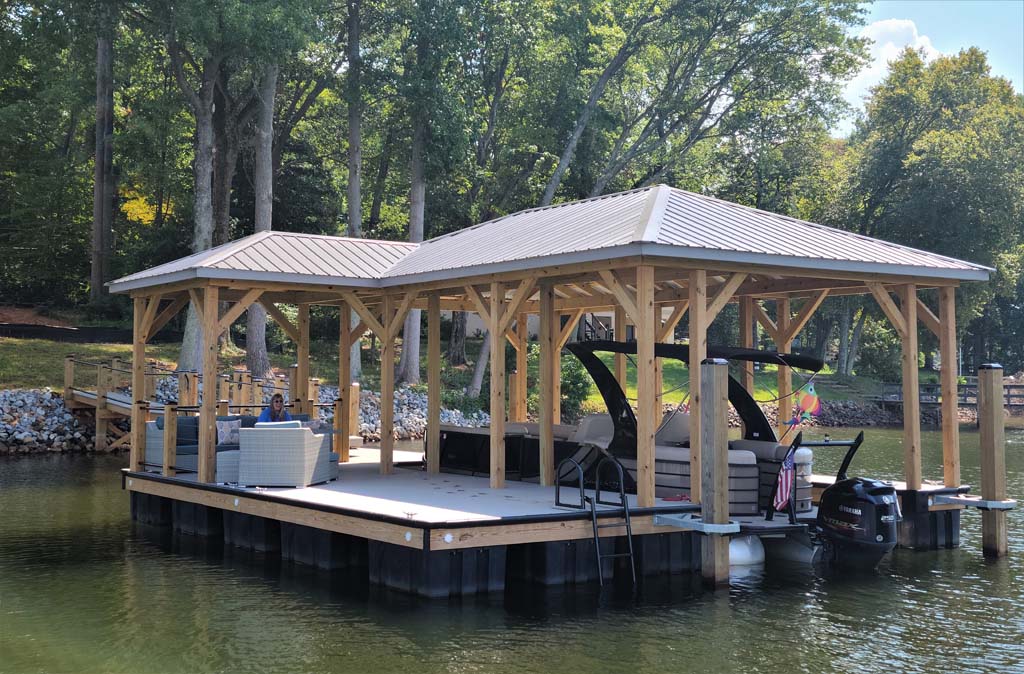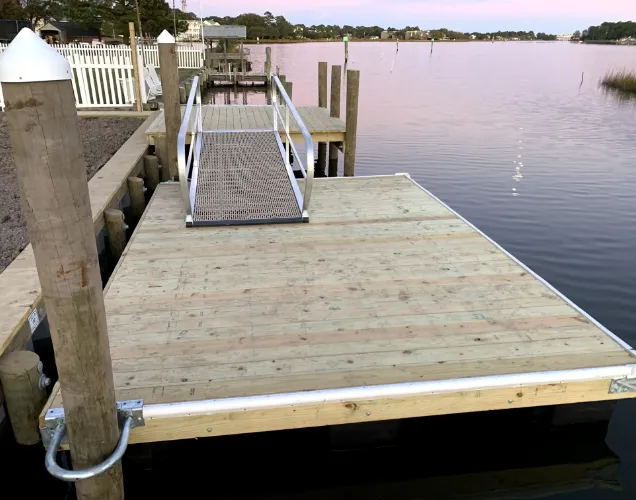Floating Docks: The Smart Selection for Modern Beachfront Living and Recreation
Floating Docks: The Smart Selection for Modern Beachfront Living and Recreation
Blog Article
Create the Perfect Docking Solution With Floating Docks
Floating docks existing a functional option for a range of maritime requirements, adapting perfectly to varying water levels and varied vessel types. As we discover the essential elements that add to the effectiveness of floating docks, a number of vital variables pertaining to stability and upkeep will certainly emerge, raising inquiries concerning just how to optimize your docking experience.

Benefits of Floating Docks
Floating docks offer many benefits that make them an optimal choice for different maritime applications. Among the main advantages is their flexibility to transforming water levels. Unlike dealt with docks, floating docks rise and fall with the trend, making certain consistent ease of access for vessels. This attribute is especially essential in areas susceptible to considerable tidal variations or seasonal water degree adjustments.
Additionally, floating docks are typically simpler and quicker to install contrasted to typical set frameworks. Their modular layout enables uncomplicated setting up and disassembly, facilitating upkeep and relocation when required. This versatility is particularly valuable for short-term applications or in settings where problems might transform.
Floating docks also have a tendency to be a lot more eco-friendly, as they reduce disturbance to the seabed and surrounding water environments. Their resilient nature reduces the danger of damage to marine life, promoting a healthier environment. Additionally, these docks can be customized to fit different vessel dimensions, guaranteeing that they fulfill details functional needs - floating docks.
Inevitably, the mix of flexibility, simplicity of installation, and environmental factors to consider makes floating docks a very reliable service for a variety of maritime needs.
Picking the Right Materials
Picking the ideal products for floating docks is crucial to ensure long life, stability, and sturdiness. The option of materials straight impacts the dock's performance in various ecological conditions, including direct exposure to water, sunshine, and possible wear from marine web traffic.
Typical materials used for floating docks include aluminum, timber, and high-density polyethylene (HDPE) Aluminum is lightweight, corrosion-resistant, and requires minimal upkeep, making it a superb selection for long life. Its initial cost can be higher contrasted to various other materials.
Timber, while cosmetically enticing and giving a typical appearance, can be prone to rot and bug damage if not correctly treated. As a result, utilizing pressure-treated wood or normally sturdy varieties like cedar or redwood can alleviate these issues.
HDPE is a popular selection because of its resistance to UV rays and chemicals, along with being eco friendly. floating dock builder. It is light-weight and available in different colors, enabling modification
Eventually, the best product choice will certainly depend on specific needs, including spending plan, desired looks, and environmental factors to consider. Cautious analysis of these variables will certainly lead to a effective and resistant floating dock option.
Design Factors To Consider for Security
When developing floating docks, guaranteeing stability is a basic aspect that can dramatically affect their functionality and security. Security in floating dock design is influenced by different variables, consisting of buoyancy, weight distribution, and the plan of elements. An optimum buoyancy system should use products that supply sufficient lift while lessening weight. This equilibrium ensures that the dock continues to be above water, even under varying tons.
Weight circulation is critical; evenly distributing lots across the dock prevents turning and enhances stability. This can be achieved via strategic positioning of docking tools, such as fenders and cleats, along with proper spacing of drifts. In addition, the dimensions of the dock ought to be thoughtfully prepared. Wider styles can use increased stability, specifically in harsh water conditions, while longer docks may require extra assistances to stop drooping.
An additional vital consideration is the environmental effect, including wave action and wind. Integrating attributes such as sidewalls or skirting can aid reduce the results of ecological pressures, preserving security in damaging problems. Ultimately, a combination of thoughtful design, material choice, and understanding of environmental variables will certainly produce a drifting dock that satisfies both stability and security requirements.
Installment Tips and Techniques

Next, safeguard the necessary permits and follow regional laws, which may determine installment approaches and ecological factors to consider. Involve a qualified service provider experienced in floating dock setups if called for. Use premium products designed for marine atmospheres to improve sturdiness and longevity.
When placing the dock, align it parallel to the shoreline to promote very easy accessibility. Make sure that the anchoring system is durable, utilizing cinder block or helical anchors to support the dock against wind and wave activity. It's crucial to represent seasonal water degree variations, including prospective ice motion in cooler environments.
Throughout the setup, confirm the dock's floatation like this and security before completing the anchoring. Routinely evaluate the installment for any kind of indicators of wear or damages. By following these techniques and pointers, you can accomplish a safe, functional, and aesthetically pleasing floating dock installment that meets your needs.
Maintenance and Care Guidelines
Caring and keeping for floating docks is essential to lengthening their life expectancy and guaranteeing risk-free use. Routine evaluations should be conducted to determine any kind of indicators of wear, damages, or marine development. Search for fractures, loosened fittings, or stained areas on the dock's surface, as these issues can compromise structural stability.
Cleaning is necessary. Make use of a pressure washing machine to get rid of algae, barnacles, and debris, which can gather gradually. For persistent development, consider environmentally pleasant cleaner that won't damage water life.
Furthermore, check the mooring lines and supports regularly to guarantee they are secure and totally free from deterioration. Change any type of frayed or harmed lines without delay to maintain security.
Throughout severe weather, such as tornados or freezing problems, take preventive procedures. Secure the dock with additional mooring lines and, if possible, get rid of any type of removable components to avoid damage.
Final Thought
In verdict, the implementation of floating docks provides a Check Out Your URL versatile and reliable docking option ideal for various maritime applications. With correct installment and routine upkeep, floating docks can offer reliable and dependable docking experiences for a large array of vessels.
As we discover the crucial aspects that contribute to the performance of floating docks, several vital variables regarding stability and upkeep will emerge, elevating concerns about just how to enhance try this site your docking experience. Unlike dealt with docks, floating docks rise and loss with the tide, guaranteeing regular accessibility for vessels.When creating floating docks, making sure security is an essential facet that can significantly influence their functionality and safety and security. Security in floating dock style is influenced by various aspects, consisting of buoyancy, weight distribution, and the plan of elements. Eventually, a mix of thoughtful style, material choice, and understanding of ecological variables will certainly produce a drifting dock that satisfies both security and safety requirements.
Report this page